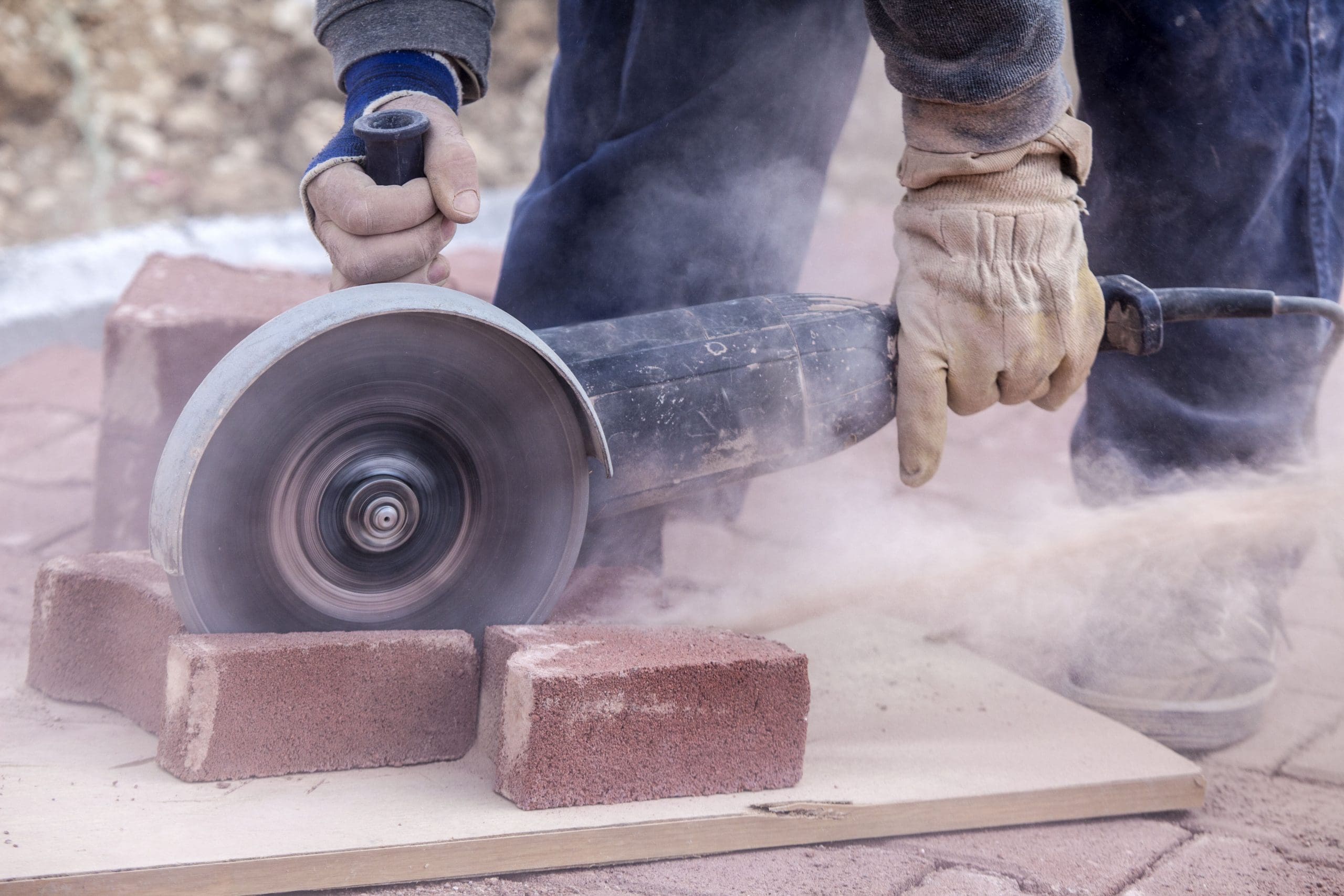
June marks National Safety Month and one area to consider examining is how your company handles silica dust. One of the top ten OSHA citations for landscaping is related to respirable crystalline silica (1926.1153).
“Some may not be completely aware of the risk potential during an average day while others may not understand the applicable rules,” says Steve Hamilton, loss control supervisor for Berkshire Hathaway Homestate Companies.
Respirable crystalline silica are small particles and are at least 100 times smaller than ordinary sand found on a beach and is created by high-energy operations like cutting, sawing, grinding, drilling or crushing rock, stone, concrete, brick, block or mortar. About 2.3 million people in the U.S. are exposed to silica at work.
“When a worker inhales silica dust, the particles become trapped in lung tissue,” Hamilton says. “They can’t be removed. Silicosis is the result. Over time, this creates scar tissue that can’t be repaired. More scar tissue reduces lung capacity, creating shortness of breath, fatigue and chest pain. There is no cure for silicosis. In addition to this, workers with silicosis are more susceptible to other diseases.”
There are three types of silicosis. Chronic silicosis occurs after 10 or more years of exposure to crystalline silica at low levels. This is the most common silicosis. Accelerated silicosis results from higher levels of exposure and can occur five to 10 years after exposure. Acute silicosis can occur weeks or months after exposure to very high levels of silica. Death can occur in months with acute silicosis cases.
OSHA’s standard requires employers to implement engineering controls, work practices and respiratory protection if an employee’s exposure to silica is above 25 micrograms per cubic meter of air as an 8-hour time-weighted average.
“Most people think of silica exposure when working with masonry, bricks, cinder blocks, pavers or other hardscape materials,” Hamilton says. “Depending on the materials a landscaper uses, employees may be exposed to airborne silica in other ways: using silica-containing materials that are not typical, during the demolition of sidewalks or using powered tools to break rocks in compacted dirt.”
Complete a hazard assessment before doing any work. Depending on the assessment will determine the best method to mitigate silica dust.
“The three most common methods are eliminating the risk (use materials that don’t contain silica), use engineering controls (such as HEPA filters at the point where silica dust becomes airborne during cutting or demolition), or use water delivery methods to reduce the amount of airborne silica,” Hamilton says. “Personal protective equipment should be the last option explored. The best method depends heavily on the way the dust is created. If a company uses a tool to cut pavers for example, a vacuum system to collect the dust might be one possible choice.”
OSHA also identifies specified exposure control methods for different pieces of equipment on Table 1, which can be found on OSHA’s site.
The best way to determine which hardscaping materials produce less silica dust is to discuss the matter with the supplier and educate the client on the benefits of using other materials.
NIOSH has estimates of exposures for materials like granite, slate and engineered stone. Please note that these are estimates only. The employer must do their own hazard assessment.
Often employers are cited for failing to complete the pre-job hazard assessment, failing to create a formal, written plan according to the guidelines and failing to enforce the controls listed in the exposure plan/assessment.
“An employer has a general duty to provide a workplace free from recognized hazards; if the employer has not done a proper hazard assessment and does not effectively implement the controls identified, they are open to citations,” says Hamilton.
While there is no cure for silicosis, it is preventable. Be proactive and look at your current control methods when conducting tasks that generate silica dust.
“Do the hazard assessment in a formal way, document a plan and implement it in a strict manner,” says Hamilton. “Train employees on the correct way to assess risk potential when completing these activities. Then, teach them the expectations for safe controls for the activities completed and hold them accountable in a strict way.”

NALP’s safety programs are produced in partnership with Rancho Mesa.
This article was published in the May/June issue of the magazine. To read more stories from The Landscape Professional magazine, click here to subscribe to the digital edition.

